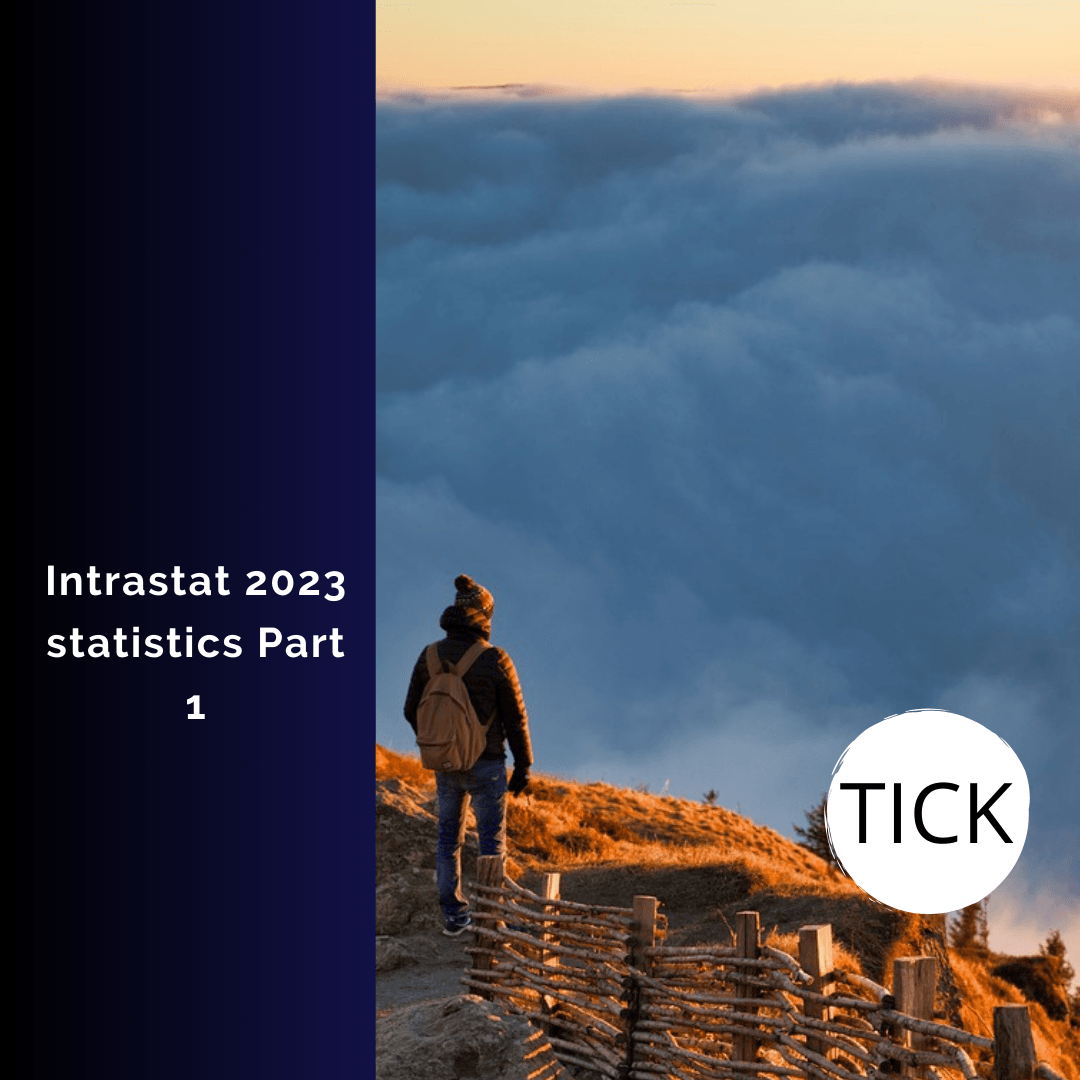What is Intrastat?
As the basis for EU external trade statistics, Intrastat plays a key role in shaping policy and monitoring trade. To gain a full understanding of your Intrastat report and why it is important to your business, check out the information below:
A short summary
Understand Intrastat reporting and its role in EU trade.
Key elements of the Intrastat declaration, including statistical data requirements, commodity codes and classification, and reporting thresholds.
Tips for effective management: keeping order through accurate documentation; use of technology and software solutions; seeking expert help when needed.
Intrastat reporting description
Intrastat reporting is a statistical system designed for businesses involved in EU trade. Its aim is to measure the flow of goods and production using foreign trade statistics, which are essential for trade policy and sectoral analysis. Intrastat reporting requires businesses to report arrivals and shipments of goods between EU Member States.
This system helps monitor trade within the European Union and detect potential VAT fraud, making it an important reporting procedure for businesses trading in an EU country.
What is exactly Intrastat?
Intrastat is the system responsible for collecting data and generating statistics on the exchange of goods between the nations of the European Union (EU). It replaced customs declarations for intra-EU trade, aiming to reduce the administrative burden on businesses and maintain accurate trade statistics.
The Combined Nomenclature (CN) classification system is used for Intrastat, which classifies goods using an 8-digit code. This system is updated annually to keep up to date with technological advances and changes in international trade in goods.
The role of the Intrastat system in European Union trade
Intrastat plays a key role in providing data to government departments to set trade policy, plan transport infrastructure and assess markets. By collecting information on the movement of goods between EU countries, Intrastat helps detect potential VAT fraud, produce accurate trade statistics, and inform policy-making.
This makes Intrastat an essential tool for businesses involved in intra-EU trade and the authorities responsible for its regulation.
Intrastat and VAT
Intrastat and Value Added Tax (VAT) are separate systems, each serving a different purpose in the context of European Union trade. Intrastat focuses on the movement of goods within the EU, collecting data on shipments and arrivals between Member States. In contrast, VAT is a consumption tax applied to goods and services, and reporting requirements are submitted to national tax authorities, not statistical offices.
Key elements of Intrastat declarations
Intrastat declarations require companies to provide statistical and fiscal data, including:
Member States
Bar code
Invoice value
Other information depending on reporting thresholds
These declarations, which have significant statistical value, are submitted to national statistical offices and are usually completed monthly, together with the VAT return.
There are two main components of an Intrastat declaration:
Arrivals (inbound traffic): These are goods brought into a specific EU Member State from another EU Member State.
Shipments (outbound movements): These are goods sent from a specific EU Member State to another EU Member State.
By providing accurate and up-to-date data, companies can ensure compliance with Intrastat requirements and avoid penalties.
Statistical data requirements
Intrastat data requirements vary from country to country and depend on the reporting thresholds set by each EU member state. These thresholds determine the value of goods that must be declared on Intrastat declarations and are subject to change.
Companies must stay up to date with these thresholds and submit accurate data to ensure compliance with Intrastat reporting requirements.
Commodity codes and classification
Commodity codes are an important element of Intrastat declarations because they classify goods using the 8-digit system of EU external and intra-EU trade statistics. The Combined Nomenclature (CN) classification system is revised annually to ensure accurate and up-to-date classification of goods, including additional units where necessary.
Thresholds for Intrastat reporting
Each Member State sets its own Intrastat thresholds, which determine the minimum value of intra-EU trade transactions that require companies to submit an Intrastat declaration. If the value of a company’s arrivals or shipments exceeds a certain threshold, they are obliged to report details of these transactions to the relevant national authorities.
It is important to note that these thresholds may vary between Member States and may also change over time for economic or administrative reasons. It is therefore recommended that companies involved in intra-EU trade regularly check with the relevant national tax or statistical authorities the current Intrastat thresholds in their countries.
Intrastat 2023 thresholds:
Austria
Import threshold: 1 100 000 €
Shipping threshold: 1 100 000 €
Belgium
Import threshold: 1 500 000 €
Shipping threshold: 1 000 000 €
Bulgaria
Import threshold: 700 000 BGN
Shipping threshold: 1 000 000 BGN
Croatia
Import threshold: €400,000
Shipping threshold: 200 000 €
Cyprus
Import threshold: €270,000
Shipping threshold: 75 000 €
The Czech Republic
Import threshold: 12 000 000 CZK
Shipping threshold: 12.000.000 CZK
Denmark
Import threshold: 22 000 000 DKK
Shipping threshold: 11 000 000 DKK
Estonia
Import threshold: €400,000
Shipping threshold: 270 000 €
Finland
Import threshold: €800,000
Shipping threshold: 800 000 €
France
Import threshold: after notification
Shipping threshold: after reporting
Germany
Import threshold: €800,000
Shipping threshold: 500 000 €
Greece
Import threshold: €150,000
Shipping threshold: 90 000 €
Hungary
Import threshold: 250 000 000 HUF
Shipping threshold: 140.000.000 HUF
Ireland
Import threshold: €500,000
Shipping threshold: 635 000 €
Italy
Import threshold: €350,000
Shipping threshold: 0 €
Latvia
Import threshold: €330,000
Shipping threshold: 200 000 €
Lithuania
Import threshold: €500,000
Shipping threshold: 300 000 €
Luxembourg
Import threshold: €250,000
Shipping threshold: 200 000 €
Malta
Import threshold: 700€
Shipping threshold: 700 €
Netherlands
Import threshold: Po powiadomieniu
Shipping threshold: Po zgłoszeniu
Poland
Import threshold: 5 000 000 PLN
Shipping threshold: 2.700.000 PLN
Portugal
Import threshold: €400,000
Shipping threshold: 400 000 €
Romania
Import threshold: 1 000 000 RON
Shipping threshold: 1 000 000 RON
Slovakia
Import threshold: 1 000 000 €
Shipping threshold: 1 000 000 €
Slovenia
Import threshold: €200,000
Shipping threshold: 270 000 €
Spain
Import threshold: €400,000
Shipping threshold: 400 000 €
Sweden
Import threshold: 15 000 000 SEK
Shipping threshold: 4 500 000 SEK
Intrastat process: registration, transfer, and compliance
The Intrastat process includes:
Registration in the Intrastat system is when the total value of goods shipped or purchased exceeds the appropriate thresholds.
Submitting declarations electronically.
Ensuring compliance to avoid penalties.
Intrastat registration may vary by country but generally requires companies to provide details of all shipments and arrivals of goods to and from other EU countries.
Intrastat registration
To begin the registration process, companies should first determine whether they meet the required Intrastat reporting thresholds in their country. Once these thresholds are exceeded, a company must register with national customs or statistical offices. This usually involves submitting a formal application containing the necessary company information, tax identification numbers, and details of the nature of the goods being traded.
After successful registration, the company will receive instructions on how to submit regular Intrastat returns. These declarations involve reporting specific information on the movement of goods, including their value, quantity, and origin/destination within the EU. It is important to keep up to date with any changes to reporting requirements or thresholds to ensure compliance with Intrastat regulations and avoid penalties.
Submitting Intrastat declarations
Filing an Intrastat declaration involves several steps to ensure accurate and timely reporting of cross-border trade within the European Union. First, businesses need to collect relevant data on the flow of goods, including commodity codes and transaction values. This information is then used to complete Intrastat declaration forms, which vary depending on the requirements of each EU Member State.
Once the forms are carefully completed, they are usually submitted electronically via designated government portals or specialized software. Companies must comply with specific reporting deadlines set by each country, which are often monthly or quarterly.
Ensuring compliance and avoiding penalties
Ensuring compliance with Intrastat requirements is crucial to avoiding penalties, which may include fines, interest, and even criminal prosecution. Enterprises should:
Keep accurate records.
Submit your declarations electronically.
Seek expert help when necessary to ensure compliance with Intrastat reporting requirements and minimize the risk of penalties.
It is important to understand the regulations and ensure that all returns are filed on time and with appropriate documentation.


